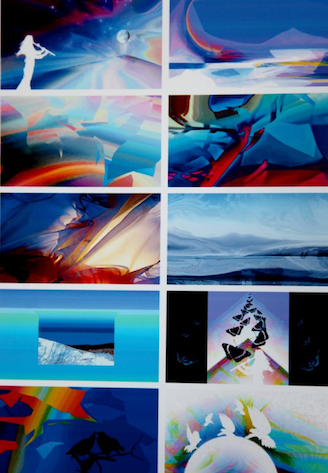Tradition and the contemporary collide: Newfoundland and Labrador art-education history
Main Article Content
Abstract
Newfoundland and Labrador, Canada, is a province proud of its historical traditions. Yet, these values are, at times, in conflict with contemporary global culture. The province’s socio-political and cultural struggles and successes, and the impact of an ongoing boom and bust cycle in resource development, are echoed both in the history of art education and in its artistic evolution. From modernism and post modernism, and DBAE to VCAE, the development of the Visual Art Program at the Grenfell Campus of Memorial University in Corner Brook provides a cautionary tale on the vagaries of promoting artistic traditionalism over contemporary meta-modernism, and the role of art in the classroom in reflecting global society at large. With a growingly mixed population in the province, art education plays a significant role in a contemporary dynamic that can challenge a self-promoted geographic and historical myopia. Art in Newfoundland and Labrador increasingly acts as a suturing mechanism and reflective device, through which to look at these tensions, allowing the art educator to play a somewhat subversive role to the larger historical, political, and social agenda. Yet art education and art have also been used as a tool to serve various shifting political agendas. Negotiating this terrain as an art educator can be difficult; tradition and the contemporary collide, yet the dynamic of this play has produced some amazing results culturally. Walking this tightrope provides a model for a newer generation who have to be increasingly multi-cultural and internationalist in their views.
Keywords: Traditionalism; Contemporary Meta-modernism; Historical, Political, and Social Agenda; Subversive Role of Art Educator; Multi-cultural.
Downloads
Article Details

This work is licensed under a Creative Commons Attribution-ShareAlike 4.0 International License.
The copyright notice is CC BY SA.
This license lets others remix, tweak, and build upon your work even for commercial purposes, as long as they credit you and license their new creations under the identical terms. All new works based on yours will carry the same license. Thus any derivatives will also allow commercial use. For example, if someone translates your article into French, the French version of the article will also have to be shared under a CC BY SA license.
References
Bolin, P. E. (2009). Imagination and speculation as historical impulse: Engaging uncertainties within art education history and historiography. Studies in Art Education, 50(2), 110-123. Retrieved from http://search.proquest.com/docview/199796118?accountid=12378
Creates, M. (1990). Don Wright: 1931-1988, a retrospective. St. John’s, NL: The Art Gallery of Memorial University.
Grubbs, J. B. (2012). Adding a chapter to art education history: Visual culture curriculum. Visual Inquiry: Learning & Teaching Art, 1(1), pp. 33–45, doi: 10.1386/vi.1.1.33_1
Park, J. (2007). Art education as critical cultural inquiry. Seoul, Korea: Mijinsa.
Pearce, H. (2006). From drawing to visual culture: A history of art education in Canada. Montreal, QC: McGill-Queen’s University Press.
Stamp, M. (2003). The development of art education in NL (unpublished master’s thesis). Nova Scotia College of Art and Design, Halifax, NS.

